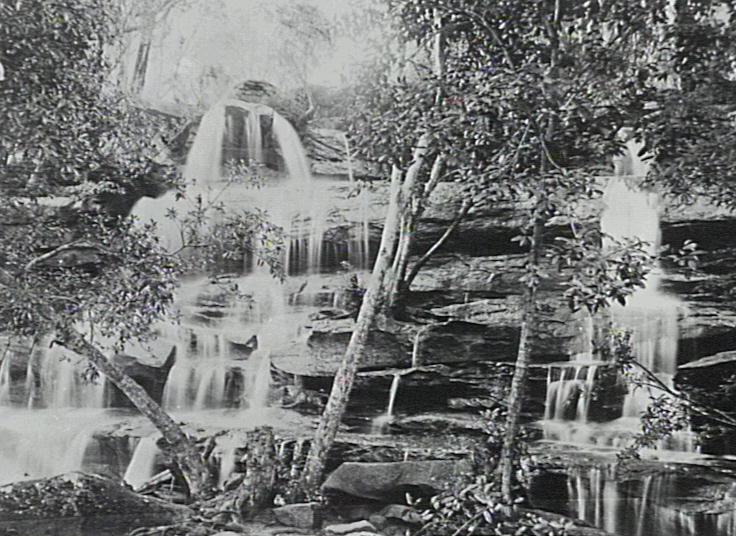A Brief History of Mosman
This brief introduction to Mosman’s history is extracted from records held in the Mosman Library Services Local Studies Collection. This collection holds a wealth of information and resources on Mosman people, places and events.
1788 – 1892
Aboriginal people are known to have occupied the Australian continent for at least 40,000 years. The Borogegal tribe inhabited the Mosman area. The most renowned Aboriginal person in Mosman’s history was Bungaree. Bungaree was born around 1775 growing up in the traditional Aboriginal environment, which his people had enjoyed for many thousands of years. However, with the arrival of the Europeans, his life became dramatically different. By the time Bungaree was 20 most of his tribe had died of smallpox. By the time he was 26 he had joined British explorers on voyages to the far north and had circumnavigated Australia with Matthew Flinders.
Bungaree became leader of his tribe, was given land at Georges Head and enjoyed the patronage of Governor Macquarie. He lived in the traditional Aboriginal way hunting and fishing in order to provide for his family. He welcomed newcomers as their ships entered Sydney Harbour, became friends with the Russian explorers and was well acquainted with the French. A well-known Sydney identity his activities were intriguing reports in the daily newspapers; his exploits and descriptions of his lifestyle were recorded in official records of the Europeans, in diaries and published works. His image, painted numerous times, was exhibited in galleries in London, Paris and Moscow. Throughout his life, Bungaree retained the respect of the people of his own world while earning the respect of the newcomers from the European world. He was the first individual known to have been called an “Australian”.
In 1789 HMS Sirius, flagship of the First Fleet was careened at what is today known as Mosman Bay or Great Sirius Cove. Less than six months later the ship was wrecked in the rough waters off Norfolk Island.
From 1801, when a battery was built at George’s Head, Mosman has been synonymous with Sydney’s maritime and defence installations. In 1811, Thomas O’Neil cultivated land at Balmoral, in 1823, Captain John Edwards settled at Balmoral and later Barney Kearns plied a ferryboat across Middle Harbour.
The late 1820s brought the whaling industry to Chowder Bay and the bay was used as an anchorage for visiting American whalers. In 1831, Archibald Mosman and John Bell were allotted grants of land in Mosman Bay to establish a whaling station. Two years later the whaling station was completed and Mosman’s home, ‘The Nest’, was built overlooking the bay. The whaling industry flourished and Archibald Mosman sold the business in 1838 moving to Glen Innes. From the 1840s, whaling declined in the bay and for the next 10 years, Mosman Bay was used for overhauling ships.
The next decade saw other land grants taken up, although little settlement spread due to Mosman’s rugged and inaccessible terrain. A foot track ran from North Sydney to Middle Head in the 1840s, but it was not until 1860 that the first official road, Avenue Road, was constructed running from the Bay to Mosman Junction. Military, Middle Head and Bradleys Head Roads were constructed 10 years later.
Richard Hayes Harnett Senior played a major role in opening up the area. In 1859, he began purchasing Archibald Mosman’s original 108 acres and over the next 30 years was responsible for the building of roads, a horse drawn bus service and ferry services linking the city to Mosman. One of the main attractions of the area was the Mosman waterfall as the head of Mosman Bay. Pleasure grounds and picnic resorts sprang up around the foreshore to cater for the visitors who flocked here particularly on weekends.

In 1878, Harnett Snr. opened a sandstone quarry at Mosman Bay, producing quality sandstone used in historic buildings throughout Australia. The 1880s and 1890s were a great boom era of achievements; Mosman Public School opened, the Congregational Church held its first service, Mosman Rugby Team played their first game, postal and telegraph services began, the water supply was installed and an electric tram service was established in 1893.
1893-
In 1893, the 1,600 residents of Mosman became part of a new and separate municipality. The first Mayor elected was Richard Hayes Harnett Junior. The boundaries of Mosman set out in 1893 remain unaltered to this day.
At the turn of the new century, Mosman prospered and building activity intensified. Residents attracted by the natural charm and vistas of the unique bushland opened shops and built federation homes. These new residents created, and maintained, the social character of Mosman. The suburb drew artists, writers, intellectuals and businessmen who strongly rejected proposals which may be likely to undermine the residential nature of their locality. Council policies zealously maintained parks and reserves with a constant effort to enhance the beauty of the natural landscape.
The Mosman Musical Society formed in 1904, the Mosman Scout Troop (the Kangaroo Patrol) held its first meeting in 1908, the Mosman Rowing Club was formed in 1910, a movie theatre, The ABC Electric Theatre, opened its doors in 1913, electric light cables were extended to Mosman from 1915, Taronga Park Zoological Gardens opened in 1916, and in 1925 a bridge replaced the steam punt at The Spit. At Balmoral an open-air temple, The Star Amphitheatre, was built in 1924 by The Order of the Star of the East, a branch of the Theosophist Society. It was demolished in 1951 and remains the source of many urban myths.
During the Depression and the war years, development slowed in the private building sector, however, a number of public works, such as the Balmoral Band Rotunda and Balmoral Promenade were constructed to create work for the unemployed.
In the late 1950s, public concern focused on the rapidly increasing number of flat developments to house a growing population. At the end of the 1960s, Council introduced controls and restrictions and by 1973, high-rise development was banned.
Mosman Council continues to take up the challenge of blending urban conservation with aesthetic, progressive development whilst retaining those natural elements of the environment that have attracted people to Mosman’s shores for over 200 years.
